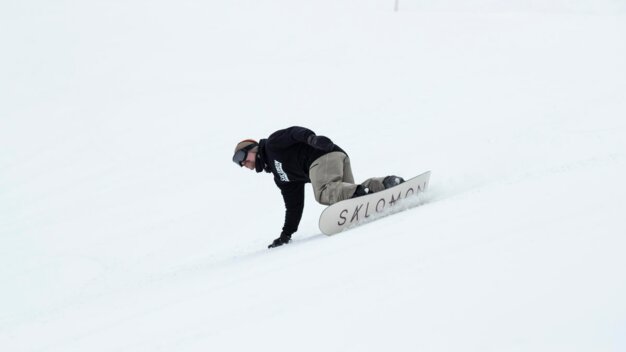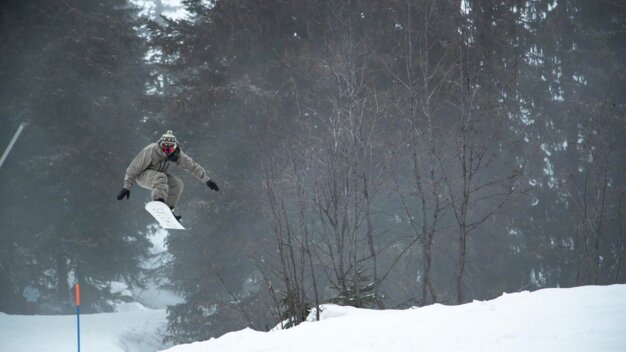
Have you only just discovered your love of snowboarding? Welcome to the club – you’re about to enter a world of unforgettable snow adventures! However, choosing your first snowboard can be an adventure of a different kind. Some might even say it’s a challenge. After all, as a beginner, you’re unfamiliar with many of the factors you need to consider when choosing a board.
To make things easier for you, INTERSPORT Rent and Salomon have teamed up to present you a buyer’s guide for beginner’s snowboards …
Which factors should you consider when buying a beginner’s snowboard?
A quality snowboard isn’t exactly cheap. So before you go shelling out your hard-earned money, take the time to think about which snowboard will best suit your needs.
Here are some basic points to consider …
Snowboard type
No matter your skill level, the type of snowboard should be one of your most important purchase criteria. After all, each type of snowboard is suited to a specific riding style:
All-mountain snowboards
- ideal for a broad range of riding styles
- suitable for most skill levels
Freeride snowboards
- more stable at high speed and in deep snow
- typically for intermediate to expert riders
Freestyle snowboards
- suitable for catching air and sliding down rails
- designed for creative snowboarding
Our tip: For beginners, an all-mountain board is the most versatile choice. You can use it on- and off-piste as well as in the park.
Camber profile
The camber profile is one of the most important factors for beginners to consider. Basically, it refers to the shape of your snowboard between its “contact points” with the snow.
There are two main types of camber profiles:
A traditional camber (convex shape) offers …
- power and precision
- stability
- pop
- response
- liveliness
A reverse camber or rocker (concave shape) is …
- more forgiving
- better for floating in deep snow
- easier for initiating turns
Did you know? There are also hybrid profiles that offer benefits of both profiles.
Our tip: The best camber profiles for stability and ease of turn initiation (two of the most important things for beginners) are flat, rocker and hybrid profiles.
Shape
When you go looking for a snowboard, you will come across a variety of shapes:
Directional
- longer nose than tail
- good at high speeds and in deep snow
True twin
- identical length of the nose and tail
- can aid your ability to ride switch
Directional twin
- directional, but not far from a twin
- can provide the benefits of both shapes
Our tip: True twins are a great shape for beginner snowboards. Their symmetrical shape makes them easier to keep your balance. What’s more, they are suitable for all types of riding.
Length
Length is another important factor for choosing a beginner’s board. A correctly sized snowboard helps you to keep balanced without too much effort.
Both longer and shorter boards have their advantages:
Longer boards
- more stable at high speeds
- more buoyancy in deep snow
Shorter boards
- more forgiving
- less swing weight for spinning and turning
Keep in mind: A board that’s too long will be hard to control, while a board that’s too short will lose out on stability.
Our tip: As a beginner, go a little shorter than the standard all-mountain length, which should be somewhere between your Adam’s apple and your nose.
Flex pattern
The flex pattern greatly affects the manoeuvrability of your snowboard. Many boards have a dynamic flex. This means that individual areas of your board have a different flex level.
In general, a softer flex is more forgiving, while a stiffer flex is more responsive. For beginners, we recommend a softer flex to help you progress quickly.
Width
The waist width refers to the width of your snowboard at its narrowest point. Most boards have a standard width, but if you have larger feet, this may be too narrow.
Our tip: Ideally, your boots should hang over the edge of your snowboard by one to two centimetres.
Did you know? Some riders prefer a narrower width because it allows for quicker edge-to-edge control.
Effective edge & sidecut radius
The effective edge is the portion of the snowboard that grips the snow when a turn is initiated. In general, you can say that …
- a shorter effective edge is easier to turn.
- a longer effective edge provides more stability.
In terms of sidecut radius, a larger radius is good for longer, sweeping turns, while a shorter sidecut allows for tighter, quicker turns.
INTERSPORT Rent tip
You’re still a little overwhelmed by all the options? Don’t despair! Our RENTertainers at the ski resorts are true winter sports experts and highly motivated to kit you out for your first snowboard adventures. They know all about length, camber and flex patterns and will help you find the perfect board for your needs.
The advantage: Our top-notch rental gear gives you the chance to try out different boards before settling on your favourite one to buy!








